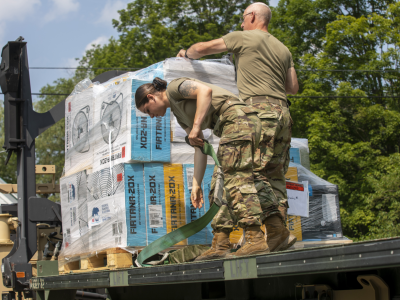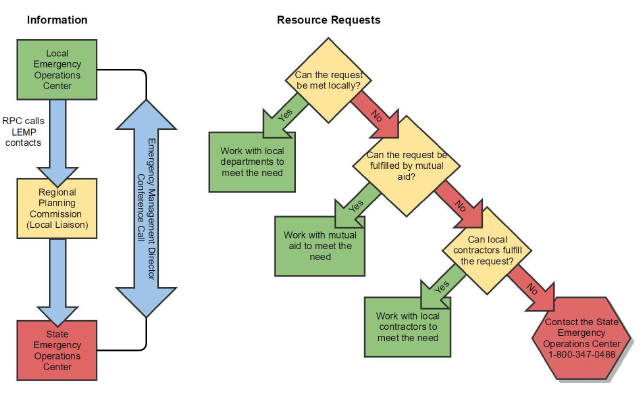
TO: Emergency Management Directors and Local Government Officials
FROM: Dan Batsie, Department of Public Safety Deputy Commissioner
FULL TEXT OF LETTER SENT 8/2/2024 VIA EMAIL
The National Guard can be activated to assist State operations before, during, and after any major disaster.
Vermont activated National Guard assets as part of the emergency declaration for the 10 July storm. They provided personnel and high-water vehicles to aid in evacuations and augment the life-safety response efforts. While the emergency declaration remains in place, National Guard resources were moved to a stand-by posture when crested flood waters receded and response measures shifted to recovery efforts. Those Guard resources remain available.
When activated, the Vermont National Guard is represented by their liaison officer in the State Emergency Operations Center (SEOC). Their role is to advise on available National Guard assets and manage those services and personnel should the state request them. National Guard liaisons were present in the SEOC during the initial life-safety response and remain in close contact with SEOC staff daily.
Many important considerations go into choosing to deploy National Guard assets during a disaster. Some of the most significant include:
- The Guard self-identifies as a resource that is used after all other resources have been exhausted.
- National Guard resources are not unlimited. Not only do deployments take soldiers and airmen away from civilian jobs but also impact scheduled missions and required training.
- Vermont no longer has an Engineer Battalion. To deploy such assets would require Vermont to request a team from another state through the Emergency Management Assistance Compact. Such a request would incur a higher cost than activating in-state assets.
If the SEOC requests National Guard resources and units are deployed:
- Vermont Guard members are called away from their civilian jobs, which are frequently the same occupations and specialties the SEOC requires.
- Utilization of Guard assets displaces civilian resources that could be used for the same purpose.
- The National Guard must be reimbursed, frequently at a higher rate compared to civilian contractors.
To be clear, if National Guard resources are needed, the SEOC will use them. However, in their reimbursement guidance, the Federal Emergency Management Agency (FEMA) suggests that municipal assets and contractors should be used first in recovery efforts. The SEOC can assist towns that need specialized assistance and can work with municipal officials to problem solve, identify contractors, and coordinate additional resources.
Under a FEMA Public Assistance Disaster Declaration, towns can be reimbursed 75% for using contractors for repair, restoration, debris removal, remediation, and other work. The municipal share can decrease depending on the scope and size of the major disaster. The SEOC can also assist municipalities in navigating the reimbursement process.
Should all resources required to protect life and property and mitigate short-term hazards be exhausted, the National Guard can be activated through its representative in the State Emergency Operations Center.
Thus far, municipal requests to the SEOC have not exceeded local, state, and civilian contractor resources. However, the SEOC will closely monitor ongoing needs and will be prepared to utilize the Guard if an appropriate role is identified.
As a helpful reminder, included below is a flow chart that describes both the flow of information and the process for accessing the SEOC with a municipal request. Please remember that all requests to the SEOC should go through the local emergency management director. A list of local emergency management directors and their contact information can be found at the Vermont Emergency Management website.
If you have any questions, please feel free to contact the SEOC at (802) 347-0488.
Very Respectfully,
Dan Batsie
Deputy Commissioner
Flow Chart
